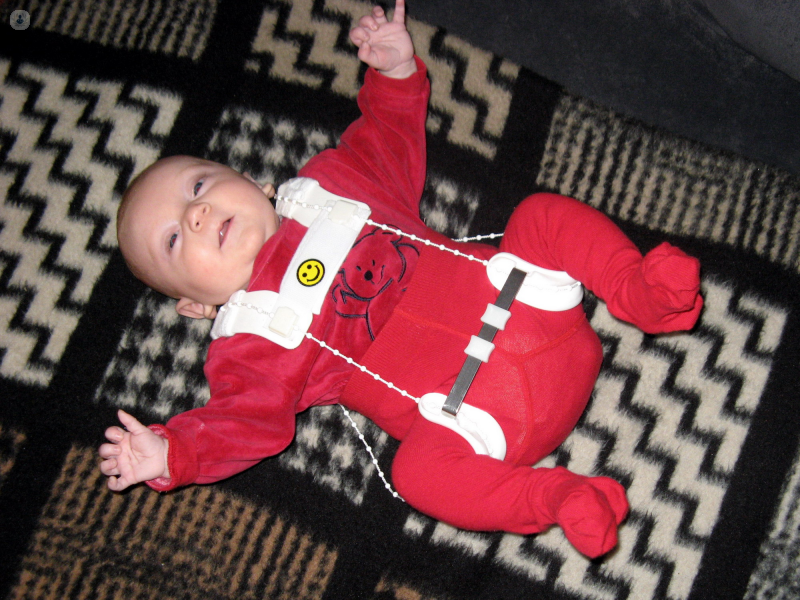


What is hip dysplasia?
Hip dysplasia is a condition of the hip joint in which the top of the thigh bone does not fit properly in the socket. This increases the risk of dislocation, i.e. the bone popping out of place. It is often referred to as developmental dysplasia of the hip (DDH) or congenital hip dislocation, as it is usually a problem that is present from birth or early childhood development.
Developmental hip dysplasia can also go hand in hand with a condition called congenital torticollis.
Prognosis of the hip dysplasia
As long as the condition is diagnosed early and treated, most children with hip dysplasia will develop normally and their hip will have its full range of movement. However, if undiagnosed and untreated, it can cause problems in later life.
Symptoms of hip dysplasia
In developmental dysplasia of the hip, the hip socket is shallow and the head of the femur (thigh bone) is not held tightly in place. This makes it susceptible to dislocation, which can be painful.
Doctors check babies’ hips more than once throughout their development – immediately after birth during the newborn physical examination and again after six to eight weeks. Gentle manipulation of the baby’s hip joints can reveal symptoms such as:
- Discomfort or pain
- The hip feels loose
- One leg may be longer than the other.
If undiagnosed or untreated, hip dysplasia can cause the following symptoms in teenagers and adults:
- Hip pain
- Walking with a limp
- Osteoarthritis, which causes stiff and painful joints
Medical tests to diagnose hip dysplasia
If a doctor notices a problem during the physical examination of the baby or in other situations, such as multiple births, breech births, premature births, or if there is a family history of the condition, they may order an ultrasound scan.
What are the causes of hip dysplasia?
Before birth, the hip joint is made of soft cartilage as it forms, before hardening and becoming bone after birth. During this time, the ball and socket mechanism of the joint is formed as the top of the thigh bone (the “ball”) and the hip socket mould each other into shape. Shortly before birth, as the baby reaches a size where there is not much space in the womb, the cramped conditions can move the ball of the hip joint out of position, resulting in a shallower socket. Factors that can increase the risk of this happening are:
- Particularly large babies
- First pregnancy
- Breech births
Treatments for hip dysplasia
If diagnosed early, the normal treatment for hip dysplasia is a leg brace, such as a Pavlik harness, which is designed to hold the baby’s thighs in such a way that they press into the socket, helping it to mould into the correct shape.
If the patient is older than six months, surgery may be required to place the ball back in the socket.
Which type of specialist treats hip dysplasia?
Paediatric surgeons, particularly paediatric orthopaedic surgeons treat hip dysplasia in infants and children, while those whose DDH goes unnoticed until adulthood may be treated by orthopaedic surgeons.
